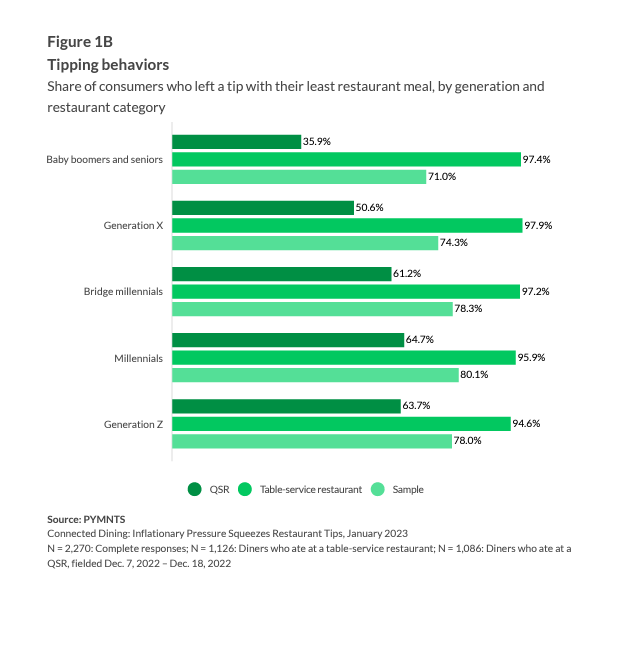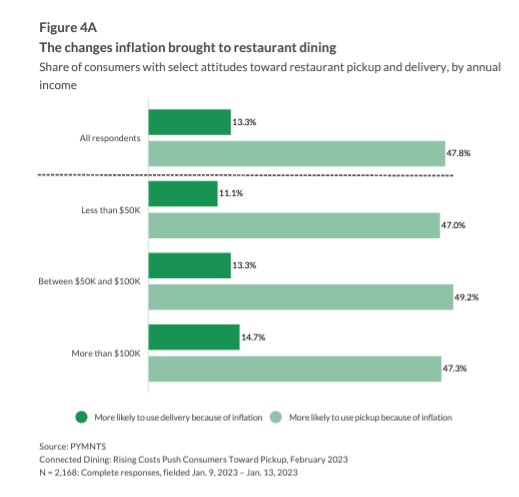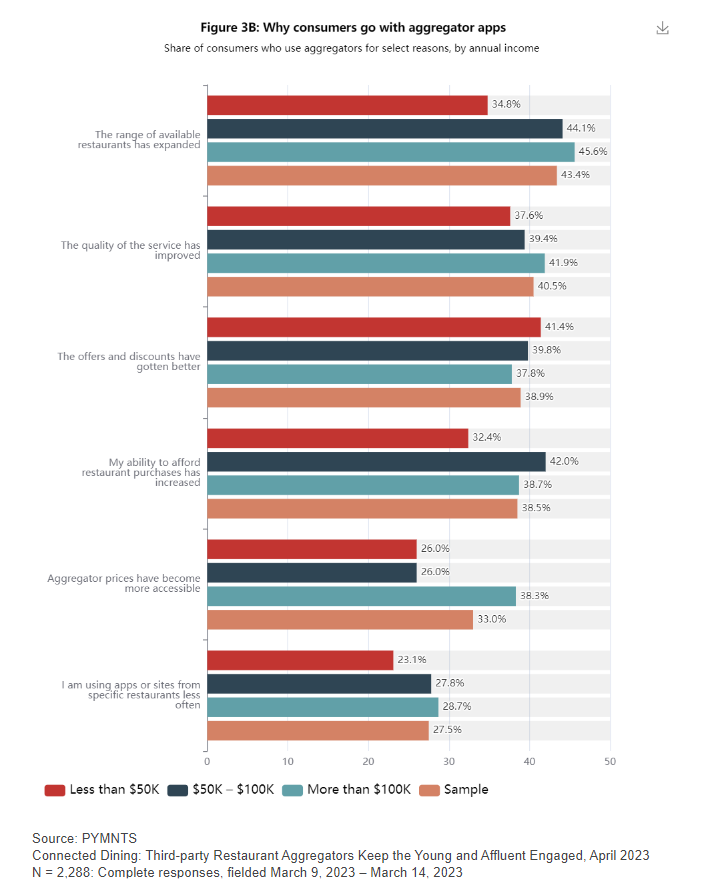Customers Still Tip for Restaurant Meals — or Don’t Eat Out at All

Consumers may be pressured to reduce tips in this tight economic environment, but data shows they overwhelmingly do not skip tipping, regardless of age, income or financial lifestyle. This is especially true at table-service restaurants, as noted in the PYMNTS report “Connected Dining: Inflationary Pressure Squeezes Restaurant Tips.”

Just as the chart at right notes that nearly all consumers tip for table service across generations, the report finds the same to be true across income levels. This suggests that tipping tableside is ingrained into consumers’ habits, no matter their age or how much they earn. There are many possible drivers behind this behavior, including peer pressure, simple habit and an understanding that for better or worse, most restaurant employees mainly survive on gratuities.
QSR Tipping
While baby boomers and seniors overwhelmingly balk at tipping quick-service restaurant (QSR) employees, more than one-third of the age demographic nonetheless did so for their most recent restaurant meal prior to being surveyed. QSR tipping share by generation rises from there, with millennials most likely to leave a gratuity at 65%, while the shares of consumers across income brackets doing the same roughly even at around half.
When tipping is too much of an expense due to inflation, customers tend to change their ordering behavior instead of shirking tips, per PYMNTS’ February “Connected Dining” report.

Opting for Pickup
While switching from eating in restaurants to delivery gained a little popularity because standard tips for drivers are lower than for servers, nearly half of consumers across income brackets avoid gratuities altogether by opting for to pick up their orders. Along with the 48% sample in the accompanying chart consistent across income levels, the share of consumers switching to delivery was consistent across younger age cohorts as well. Approximately 42% of millennials, bridge millennials and Gen Z had used pickup for their last restaurant meals, with millennials citing tipping expectations driving them to eat at home more often.
Aggregator Use
When it comes to the ultimate meal timesaver, delivery aggregators, consumers tend to understand that tipping is an essential part of the convenience cost. Although aggregator use declined for a time as consumers cut costs, customers who do use them are leaning on them more, as detailed in the PYMNTS April “Connected Dining” report.

Across income brackets, offers and discounts along with lowered aggregator prices were top-cited reasons for consumers choosing to use the ordering platforms. This increased affordability is driving usage among middle-income consumers, with discounts potentially pulling in more lower-income consumers. Presumably, this cost savings leaves more room for customers to tip their delivery person, which could in turn lead to potentially increased aggregator use, as PYMNTS research has found 53% of consumers skip delivery to avoid tipping.
Whether ordering online or in-person, eating at home or at a dining establishment, consumers have come to accept tips as a standard added cost to restaurant meals. And when they don’t have room in their budget to tip when ordering in or eating out, they simply go without.

